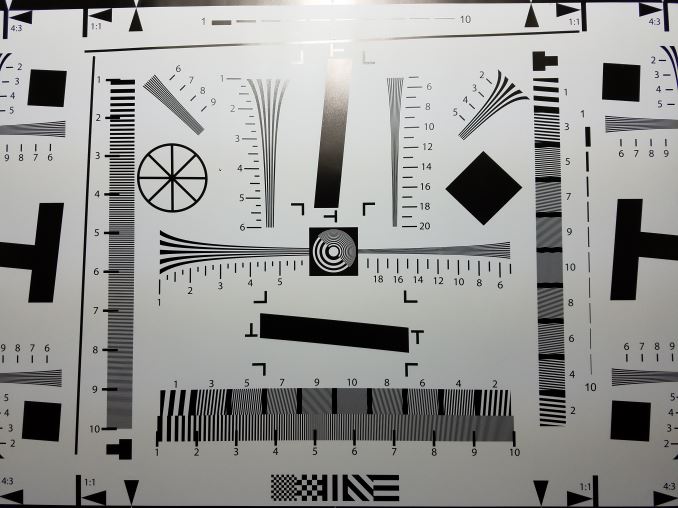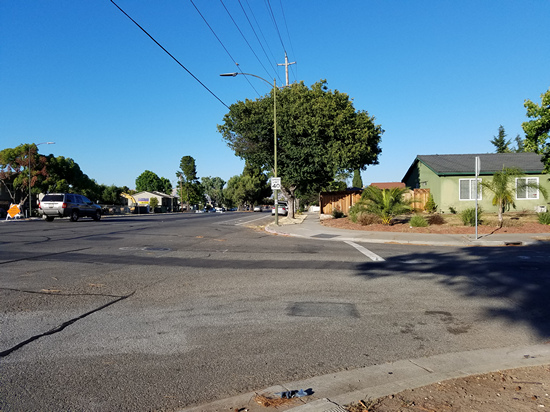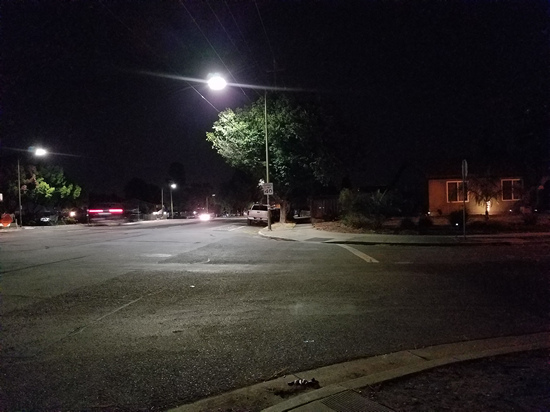The Samsung Galaxy S7 and S7 edge Review: Part 2
by Joshua Ho on July 5, 2016 8:00 AM ESTStill Image Performance
Now that we’ve covered the user experience associated with the camera, we can start to go over the output that the Galaxy S7 is capable of producing. In order to do this we continue to carry over the same sorts of benchmarks that we’ve used in 2015, which is to say that we use a combination of standardized test charts with semi-controlled lighting along with real world testing to try and see how the device actually performs outside of rather simplistic tests.
Starting with the ISO chart we can see quite clearly that the Galaxy S7 has lost noticeable ground in resolution relative to the Galaxy S6 when you look at the center of the photo, but at the edges of the photo the Galaxy S7 actually appears to have the lead against the Galaxy S6. The same sort of story plays out with the HTC 10 as it clearly has more detail than the Galaxy S7 at the center of the photo but the edges of the HTC 10’s test chart shot shows clear defocus that gets pretty terrible at the corners.
| Daytime Photography |
In our daytime landscape test we can see the sorts of effects that the smaller pixel size has had on the Galaxy S7. Relative to the Galaxy S6, there’s almost no delta in the detail resolved, but right away it’s obvious that the sharpening halos have become even more obvious than before which is concerning. These observations also apply to the Galaxy Note5, although the Note5 is a bit sharper due to some changes in image processing relative to the Galaxy S6. However I wouldn’t say that there’s an appreciable difference one way or another here.
Relative to the iPhone 6s, the Galaxy S7 is basically identical in detail as well, but the iPhone 6s tends a bit warmer and has much, much less obvious post-processing that is extremely obvious on the distant trees that contrast against the sky. This is actually kind of surprising for me given that the Galaxy S7 has a larger sensor, but I suspect the dual pixel AF, wider aperture, and slightly wider field of view are eliminating whatever advantages increased sensor size might bring.
Compared to the HTC 10, the Galaxy S7 has better edge contrast, but generally it looks like textures have better detail on the HTC 10. I haven’t been able to do extensive RAW comparisons yet but it looks like HTC is just blurring luminance noise out too aggressively here for whatever reason. I’m not sure what causes this in image processing, but given how other OEMs like LG and Apple are fully capable of mostly eliminating color noise from their photos while retaining most of the detail that their cameras are capturing HTC would do well to do the same.
The final point of comparison I want to make here is the LG G4/G5. Although the G5 seems to have started an AF run in the middle of the capture, the areas where the photo is actually focused are arguably better than what the Galaxy S7 can put out. Even next to the G4, the Galaxy S7 falls short. I’m honestly not sure why LG doesn’t get more credit here, because next to Apple they seem to have the best image processing algorithms in the industry.
| Low Light Photography |
While daytime quality is critical, I suspect most people are going to be interested in low light performance as this is usually the hardest test for any OEM to get through. It’s taken years for OEMs to start shipping acceptable image processing in low light that wasn’t just a smeary and oversharpened mess, so getting this right is pretty important to say the least.
Unfortunately, the Galaxy S7 is just a bit disappointing here. The LG G5 is just clearly better here as noise reduction is better in pretty much every way and it looks a lot more natural due to less obvious sharpening halos. I would also argue that the HTC 10 is also better here due to its better texture detail and better handling of shadow detail, even if edges are softer.
The Galaxy S7 also has this strange streaking light flare with bright sources that I just couldn’t get rid of despite wiping the lens multiple times with a clean cotton cloth, which was done for every phone in this test before taking the picture. In fairness, the Galaxy S7 is still the fastest camera out of everything in this test, but it comes at the cost of rather disappointing output for me. The Galaxy Note5 looks like it might even be slightly better than the Galaxy S7, which is a weird regression when the general idea of going to a larger pixel size is to get better low light performance. As alluded to earlier, the cost of the dual pixel AF system may be sensitivity due to the dual photodiodes and light barrier to generate a phase detection pixel. While this is just one test example I’ve spent a lot of time playing with the camera on the Galaxy S7 and in general its low light performance is fairly similar to what you see above. The only time where I really see the Galaxy S7 lead is in extreme low light conditions where everything is reaching ISO and shutter speed limits.
Overall, while the user experience of the Galaxy S7's camera is industry-leading, the Galaxy S7 represents a somewhat unfortunate sidegrade in camera quality at best. I would argue that Samsung has gone in the wrong direction with their camera processing as they seem to be relying on strong noise reduction and sharpening more than ever before. The Galaxy S7 also retains the oversaturated color rendering of the Galaxy S6. While I'm sure most people are happy with these results, Apple and LG tend to have more accurate color rendition with their cameras. While HTC doesn't quite nail color rendition, they are arguably closer to reality than Samsung is. Hopefully with their next device they manage to maintain their class-leading speed, but with better post-processing and overall image quality.



















266 Comments
View All Comments
ray_cheeno - Sunday, July 10, 2016 - link
Dear Joshua, it's very fine that you point out that the Samsung S7 too expensive compared to One plus 3 and Xaomi Mi5. I have not seen a comment to your favored Apple IPhone 6 and 6S. Therefore I would like to see a Part 3 and more objectivity. Thank you.Lau_Tech - Sunday, July 10, 2016 - link
I feel that going forward Josh should do the Iphone reviews and Andrei should do the Android phone ones.I don't doubt the objectivity of either writer, but Josh's tendency to downplay and undersell android phones and features, as well as to produce late reviews, has undoubtedly contributed to Anandtech's reputation as an pro Apple site.
Splitting up the phones (perhaps android phones require 2 writers, given their volume) will allow for faster and greater variety in reviews.
Ranger1065 - Tuesday, July 12, 2016 - link
Now taking bets on whether Anandtech will have a proper Geforce 1080 review within 6 months of release...My bet is NOT.
Even if they do who will care?
As the clicks decrease....
Bye Bye Anandtech.
_Aaron_ - Tuesday, July 12, 2016 - link
--- Anandtech Galaxy S7 Review: "Although the G5 seems to have started an AF run in the middle of the capture, the areas where the photo is actually focused are arguably better than what the Galaxy S7 can put out. Even next to the G4, the Galaxy S7 falls short. I’m honestly not sure why LG doesn’t get more credit here, because next to Apple they seem to have the best image processing algorithms in the industry.Unfortunately, the Galaxy S7 is just a bit disappointing here. The LG G5 is just clearly better here as noise reduction is better in pretty much every way and it looks a lot more natural due to less obvious sharpening halos. I would also argue that the HTC 10 is also better here due to its better texture detail and better handling of shadow detail, even if edges are softer.
However, with that said the output of the Galaxy S7 and S7 edge’s camera is not that impressive. I would argue that while it’s not worse than the iPhone 6s Plus, it is basically comparable. The real competition in this space comes from the HTC 10 and LG G5, the two of which manage to deliver arguably better still image output ".
--- Anandtech LG G5 review: " When it comes to noise in bright outdoor conditions, the G5 sits about in the middle of this pack the G5 sits about mid pack, with the iPhone 6s Plus, Huawei P9, and Galaxy S7 edge all performing just a little better.
In both scenes, the Galaxy S7 edge takes the brightest picture despite using the fastest shutter speed. The G5’s images are a little darker than the G4’s because it favors a shorter exposure, but it still produces brighter images than the Moto X and Nexus 6P.
The Galaxy S7 edge shows no vignetting, while the Nexus 6P suffers from this issue to a mild degree. All of the other phones, including both of the G5’s cameras, show negligible vignetting.
In bright daylight, the G5 equals the Galaxy S7 edge, producing excellent looking photos. When there’s less light available, like on cloudy days or when moving indoors, the G5 starts to struggle. It still does pretty well setting white balance and exposure, although the iPhone 6s Plus consistently does better. Image noise, however, is a serious problem for the G5. Its images show significantly more noise grain than other flagship devices, degrading image quality ".
Ok, now, I'm confused: should I follow Anandtech's words, or Anandtech's words?
isik - Tuesday, July 12, 2016 - link
www.egemenweb.com thankspeterApinto - Tuesday, July 12, 2016 - link
The whole review spells "NOT BIASED!" in every part.Why? Because the author is actually able to document his allegations, transforming them into arguments.
In fact, this review is really close to being an actual analysis, where the author breaks down all the relevant parts of the S7 and its functions, in order to produce a solid evaluation. And he does this by using solid test tools and techniques, so the results can be recreated by others. This is as close to science as I imagine any tech site is able to get.
So - you can disagree on his conclusion, but calling this review biased just shows that it is you who is biased. Really.
KoolAidMan1 - Thursday, July 14, 2016 - link
Reality is biased for emotional ideologues who worship Android as their god.IDGI
StimulatedBoy - Wednesday, July 13, 2016 - link
Thx, Joshua. This kind of analyses, eye for details and objectivity is what has drawn me to Anandtech for the last 10-15 years. Keep up the good work!Aaight - Thursday, July 14, 2016 - link
Lol, er du her og grupperunker også :D Synd du bommet på 3 av 3, hehe!pukemon1976 - Wednesday, July 13, 2016 - link
I see the comments mention bias a lot. Me? I think the author is trying to get a job at apple like Klug and Shimpi. Geez. Can you not make it anymore obvious? I think some of us that are fanboys of android pretty much know that apple makes a good all around overpriced phone. Cpu? Winner by efficiency and architecture. GPU? Not necessarily winner but powerVR uses different method of drawing graphics and that is drawing what is only shown. Nonetheless, powerVR makes a damn good efficient GPU. A lot of things are just details. Like battery life? Author gets away with mentioning but x phone has a bigger battery. What about iPhone uses less lines of resolution in both their models so battery life comparison is just details. Cameras? I can't comment really on quality of s7/s7 edge but do know they focus really fast and process fast. Especially exynos version. Iphone camera? I've seen some really.bad pictures from my friends as of late. And some admittedly know their camera isn't all it's cracked up to be. If I'm taking pictures with my note4 at some memorable event usually my friends and family want copies of my pictures, no matter what phones they have. And work just issued us iPhone 6+ a few months ago. Geez. Impressed with sunny day shots. But I work in dark environments often. I'm pulling out my note4 camera or somebody is asking me to take an important picture if only iphones around most of the time. And I wish author and company would take a better approach to wifi and lte battery tests. My note4 with the first modem to use power enveloping for LTE is noticeablyore efficient than WiFi. I've proven it over and over and over. Even my geek friends are befuddled by it. And how come author never mentions iPhone dropping frames or lagging? I do admit though iPhone does have great memory management, not to mention noticeably faster internal storage. My micro SD though... oh wait... have to pay super premium for extra storage. Really wish author and friends were less biased. I'm fine with opinions. Anand wrote great articles and his iPhone bias didn't ruin it for me. Methinks, the reviews take so long because anandtech isn't anandtech anymore. Me also thinks author and friends so jealous they meticulously spend a ridiculous amount of time making apple proud of their review so they too can go work in Cupertino one day. Unbelievable how shoddy this review was. Really? When you couldn't say apple was the best bar none in a certain department you digressed to other Android phones, probably meaning apple isn't even close to the top, since you have to resort to that. And some of you apple fanboys need to lay off the apple look aid. It has been so obvious as of late. I know apple does a lot of things well. And some they don't. And then there's so much customization in amdroid, especially with root, even moreso with unlocked bootloader. I think some of you guys never read Klug's and shimpi's reviews. Even though they showed their apple bias, they did some really good reviews. Reviews I would come back for. Even read the iphone reviews. I know why I've hardly been coming to anandtech lately but this review I know I'll be coming even less. No more bookmarks or waiting g for the other stuff l liked to read about like Intel, nvidia, and, ssd tech. Until next time, might be awhile, and hopefully better reviewers, peace out.